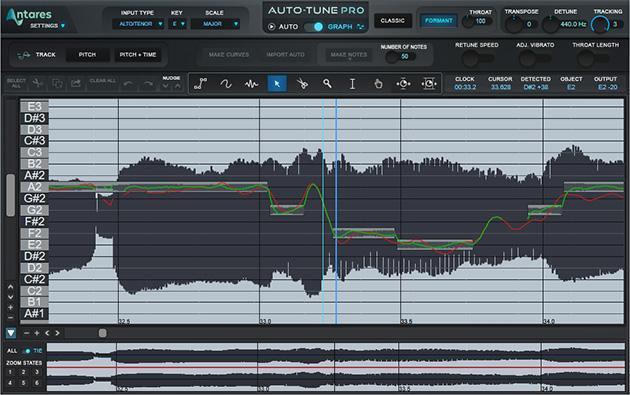The science behind Auto-Tune entails sophisticated digital sign processing methods to investigate and manipulate the pitch of an audio signal. Here's a breakdown of the vital thing scientific ideas behind Auto-Tune:
1. Pitch Detection:
Frequency Analysis: Auto-Tune begins by analyzing the incoming audio signal through a process called frequency analysis. This involves breaking down the complicated waveform of the audio signal into its constituent frequencies.
Fundamental Frequency Detection: The elementary frequency, which corresponds to the perceived pitch of the sound, is recognized. In the context of vocals, that is the pitch of the sung or spoken observe.
2. Reference Pitch Comparison:
User-Defined Settings: The detected pitch is then compared to a reference pitch or musical scale set by the consumer or the music producer. The reference pitch represents the meant or correct pitch for the performance.
use autotune and Key Settings: Auto-Tune permits users to specify the musical scale and key of the song. This information helps in making extra accurate pitch corrections based mostly on the context of the music.
3. Pitch Correction:
Algorithmic Correction: If the detected pitch deviates from the reference pitch, Auto-Tune applies corrective processing. The algorithm calculates the required pitch correction to bring the detected pitch consistent with the reference pitch.
Correction Speed: Auto-Tune offers control over the velocity at which pitch correction is utilized. Faster correction instances lead to extra quick corrections, while slower settings create a smoother, extra natural-sounding effect.
four. Graphical Interface:
Visual Representation: Many variations of Auto-Tune function a graphical interface that displays the pitch of the enter sign over time. This visible illustration allows producers and engineers to see the pitch corrections and make handbook adjustments if needed.
Time Domain vs. Frequency Domain Processing: The graphical interface usually represents the correction course of in both the time domain (waveform) and the frequency area (pitch analysis), offering a complete view of the correction process.
5. Creative Effects:
Intentional Pitch Manipulation: Beyond corrective capabilities, Auto-Tune can be used for intentional pitch manipulation to create distinctive vocal results. This entails exaggerating pitch correction to attain the attribute "auto-tuned" sound.

Stylistic Choices: Artists and producers use Auto-Tune creatively to make stylistic decisions that contribute to the overall sound and character of a track.
6. Real-Time and Post-Processing:
Real-Time Correction: Auto-Tune can operate in real-time during live performances, providing instantaneous pitch correction. This requires low-latency processing to ensure minimal delay between the enter sign and the corrected output.
Post-Processing: In the studio, Auto-Tune is often utilized as a post-processing effect throughout recording or mixing. This allows for extra precise adjustments and inventive experimentation.
7. Customization:
Adjustable Parameters: Auto-Tune offers varied adjustable parameters, including correction velocity, scale settings, and key settings. This customization permits users to tailor the pitch correction to the precise wants of a efficiency.
eight. Advanced Techniques:
Formant Shifting: Some variations of Auto-Tune include formant shifting capabilities, allowing for manipulation of the vocal timbre while preserving the pitch correction.
Note Transition Handling: Advanced algorithms handle transitions between completely different notes, making certain easy and natural-sounding pitch corrections.
In summary, Auto-Tune operates at the intersection of digital sign processing and music principle. It leverages sophisticated algorithms to analyze, evaluate, and manipulate the pitch of audio alerts, offering both corrective and artistic prospects in music manufacturing. The steady evolution of Auto-Tune know-how reflects advancements in sign processing and the continued quest for new and progressive soundscapes in the music trade..
